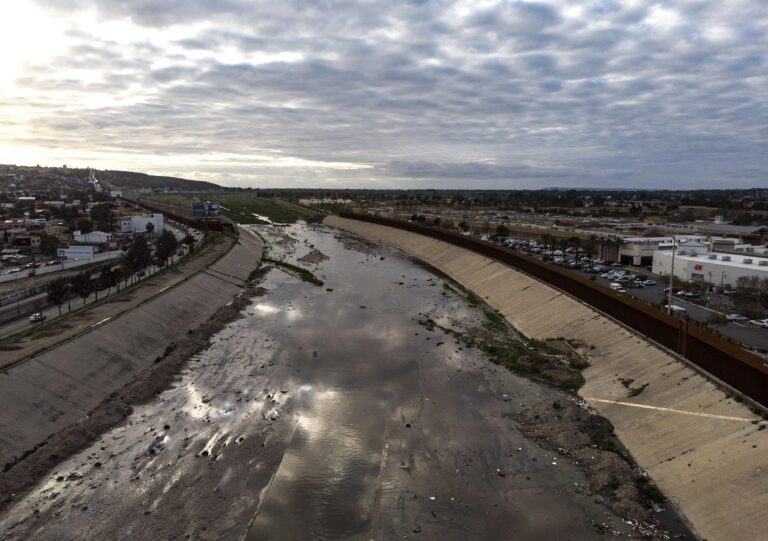In a significant step toward addressing a long-standing public health and environmental challenge, the United States and Mexico have reached an agreement to tackle the raw sewage crisis in Tijuana. The collaboration, announced by officials from both countries, aims to implement comprehensive measures to reduce sewage overflow into the Tijuana River and surrounding areas, which have posed serious risks to communities on both sides of the border. This joint effort marks a pivotal moment in binational cooperation, underscoring the urgency of resolving an issue that has affected residents’ quality of life and cross-border environmental conditions for years.
U.S. and Mexico Collaborate to Address Tijuana Raw Sewage Crisis
The recent agreement between U.S. and Mexican officials marks a significant step forward in resolving the longstanding raw sewage discharge into the Tijuana River, which has severely impacted both border communities. This collaboration will focus on enhancing infrastructure and implementing advanced waste treatment technologies to prevent contaminated waters from flowing into San Diego’s coastal areas. Key initiatives include:
- Joint funding efforts to upgrade wastewater treatment plants
- Real-time monitoring systems for early detection of sewage overflows
- Community engagement programs to raise awareness about sanitation practices
Authorities anticipate that these measures will not only improve water quality but also protect public health and boost local tourism. The agreement emphasizes a shared responsibility and the importance of cross-border cooperation, highlighting that environmental challenges require united solutions. Below is a summary of planned interventions and expected impact:
| Intervention | Expected Outcome | Timeline |
|---|---|---|
| Infrastructure upgrades | Reduction in raw sewage discharge by 75% | 12-18 months |
| Monitoring systems installation | Immediate response to overflows | 6 months |
| Community and stakeholder workshops | Increased public awareness & participation | Ongoing |
Impact of Sewage Contamination on Public Health and Environment
Raw sewage flowing untreated from Tijuana into neighboring areas has directly impacted millions of residents on both sides of the U.S.-Mexico border, raising significant public health concerns. Exposure to contaminated water has led to increased incidences of gastrointestinal illnesses, skin infections, and respiratory conditions, particularly among vulnerable populations such as children and the elderly. Public health officials warn that pathogens found in the sewage can spread diseases like hepatitis A, cholera, and salmonellosis, straining local healthcare systems and increasing hospitalization rates.
Beyond health risks, the environmental consequences are severe and widespread. Toxic pollutants and organic waste disrupt aquatic ecosystems, killing fish and contaminating wildlife habitats. The degradation of water quality affects not only biodiversity but also economic activities such as fishing and tourism. Key impacts include:
- Loss of marine life diversity
- Destruction of essential wetland areas
- Accumulation of harmful algae blooms
- Long-lasting soil contamination
| Impact Category | Key Consequences |
|---|---|
| Public Health | Increased disease outbreaks, hospital admissions, reduced quality of life |
| Environmental | Ecosystem damage, biodiversity loss, water and soil pollution |
| Economic | Decline in fisheries, tourism losses, cleanup costs |
Key Infrastructure Projects Planned to Mitigate Wastewater Overflow
To tackle the persistent issue of raw sewage contaminating waterways, both governments have committed to a series of strategic infrastructure investments. Among the most ambitious projects is the expansion of the existing wastewater treatment plant in Tijuana. This facility will see capacity doubled, integrating advanced filtration technologies designed to handle increased volumes during heavy rainfall periods. Additionally, a new network of underground channels and storage tanks will be constructed to temporarily hold excess wastewater, preventing direct discharge into the Tijuana River and ultimately the Pacific Ocean.
Key components of the plan include:
- Upgraded pumping stations: Enhancing flow control to mitigate overflow risks.
- Green infrastructure installations: Implementing bioswales and permeable pavements in urban areas to reduce stormwater runoff.
- Cross-border collaborative monitoring: Establishing real-time systems for early detection and rapid response to potential overflows.
| Project | Completion Date | Estimated Cost (USD) |
|---|---|---|
| Tijuana Treatment Plant Expansion | 2026 | $150 million |
| Underground Storage System | 2025 | $85 million |
| Cross-border Monitoring Network | 2024 | $20 million |
Recommendations for Sustained Binational Cooperation and Funding
To maintain progress in addressing the raw sewage crisis, it is crucial for both the U.S. and Mexico to establish a dedicated binational oversight committee. This body should include representatives from local governments, environmental agencies, and community stakeholders to ensure transparency and accountability. Regular cross-border audits and joint reporting will foster trust and facilitate timely interventions when challenges arise. Additionally, fostering community engagement through public education campaigns is vital for promoting sustainable wastewater management practices on both sides of the border.
Securing consistent funding requires innovative financial strategies that leverage both governmental and private sector resources. A combination of public funding, international grants, and private investments should be targeted towards upgrading infrastructure and supporting maintenance efforts. The following table outlines potential funding sources along with their expected contributions and roles:
| Funding Source | Estimated Contribution | Primary Role |
|---|---|---|
| U.S. Federal Grants | $150 million | Infrastructure development |
| Mexican Federal Funds | $100 million | Operational expenses |
| Private Sector Investments | $50 million | Technology upgrades |
| International Environmental Grants | $30 million | Research & sustainability projects |
- Implement joint fiscal oversight for accountability.
- Encourage cross-border partnerships with environmental NGOs.
- Develop scalable funding models that adjust to changing needs.
The Conclusion
The agreement between the U.S. and Mexico marks a significant step toward resolving the ongoing raw sewage crisis in Tijuana, aiming to improve public health and environmental conditions along the border. As officials begin implementing the joint measures, communities on both sides of the border remain hopeful that this collaboration will bring lasting solutions to a problem that has long affected residents and ecosystems alike. Continued monitoring and cooperation will be essential to ensuring the success of this cross-border effort.







